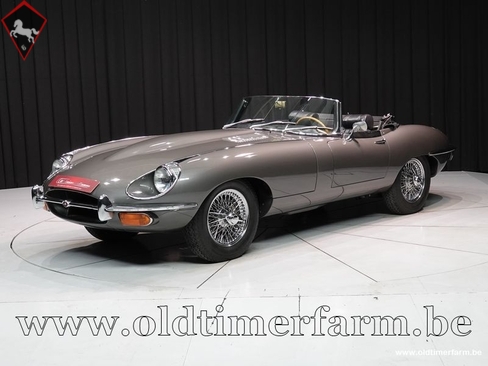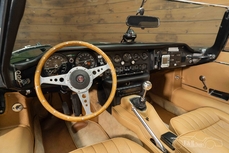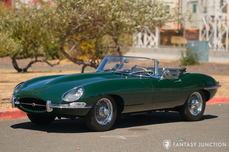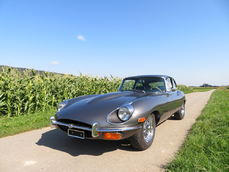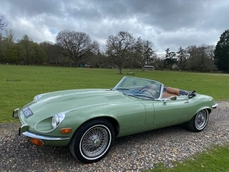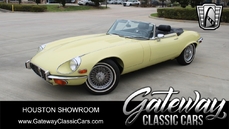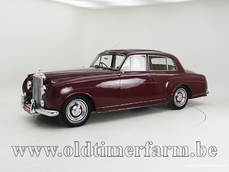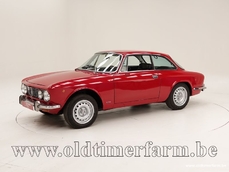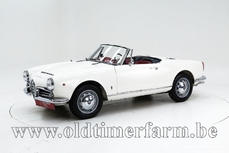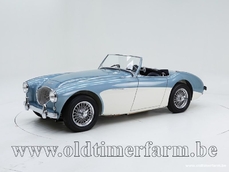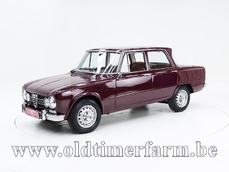Jaguar E-type Series 2 OTS 4.2 '70 1970
General description :
The E-Type was initially designed and shown to the public as a grand tourer in two-seater coupé form (FHC or Fixed Head Coupé) and as convertible (OTS or Open Two Seater). The 2+2 version with a lengthened wheelbase was released several years later. The model was made in three distinct versions which are now generally referred to as "Series 1", "Series 2" and "Series 3". A transitional series between Series 1 and Series 2 is known unofficially as "Series 1½". The Series 1 was introduced, initially for export only, in March 1961. The domestic market launch came four months later in July 1961. The cars at this time used the triple SU carburetted 3.8 litre straight 6 engine from the XK150S. The first 500 cars built had flat floors and external hood (bonnet) latches. These cars are rare and more valuable. After that, the floors were dished to provide more leg room and the twin hood latches moved to inside the car. The 3.8 litre engine was increased to 4.2 litres in October 1964. Series 2 was produced from 1968 to 1970. It is easy to recognize from the front: the headlights have lost their glass-framed protection. The brevity of its existence is justified by the fact that the American market, which represented 80% of sales, was subject to the adoption of extremely strict safety rules. It is the series III, with a revisited structure, which succeeds it until 1975, date on which the XJS appears. Specifications Bodywork Length : cm (in): 445 (175.2) Width : cm (in): 163 (64.3) Height : cm (in): 122 (48) Wheelbase : cm (in) : 244 (96) Weight: kg (lb) : 1140 (2520) Mechanics. Displacement : straight-six 4235 cc (257 cu in), front-mounted Valve gear : 12 Fuel system : 2 Stromberg HD8 carburettors Gearbox : 4-speed mnual Drive wheels : rear-wheel drive Maximum power : 246 hp at 5400 rpm Maximum torque : 384 Nm at 4000 pm Top speed : 236 km/h (143 mph)
http://www.oldtimerfarm.be/en/collection-cars-for-sale/5556/jaguar-e-type-series-2-ots-42-70.php
1970 Jaguar E-type Series 2 OTS 4.2 '70 is listed sold on ClassicDigest in Aalter by Oldtimerfarm Dealer for €89950.
Car Facts
Car type : Car Make : Jaguar Model : E-type Model Version : Series 2 OTS 4.2 '70 Engine size : 0.0 Model Year : 1970 Location : Aalter
Sold
Seller Information
Sold
People who viewed this Jaguar E-type also viewed similar Jaguar listed at ClassicDigest
Other cars listed for sale by this dealer
About Jaguar E-type
The Jaguar E-Type FHC (Fixed Head Coupe) is a classic sports car that was produced by the British automaker Jaguar Cars from 1961 to 1974. It is often regarded as one of the most beautiful cars ever produced, with its long, sleek hood, flowing curves, and aggressive stance.The E-Type FHC was derived from the D-Type race car that won the 24 Hours of Le Mans in 1955, 1956, and 1957. It was powered by a 3.8-liter inline-six engine that produced up to 265 horsepower and featured advanced suspension and braking systems, with independent suspension and disc brakes on all four wheels.
The E-Type FHC was known for its exceptional handling and performance, with a top speed of up to 150 mph and acceleration from 0 to 60 mph in as little as 6.7 seconds. Its design was also innovative for its time, featuring an independent rear suspension and a monocoque construction.
The Jaguar E-Type FHC became an iconic car of the 1960s and was favored by celebrities and enthusiasts alike. OTS i.e The Jaguar E-Type Roadster became an iconic car of the 1960s and was favored by celebrities wanting to be seen in their car.
